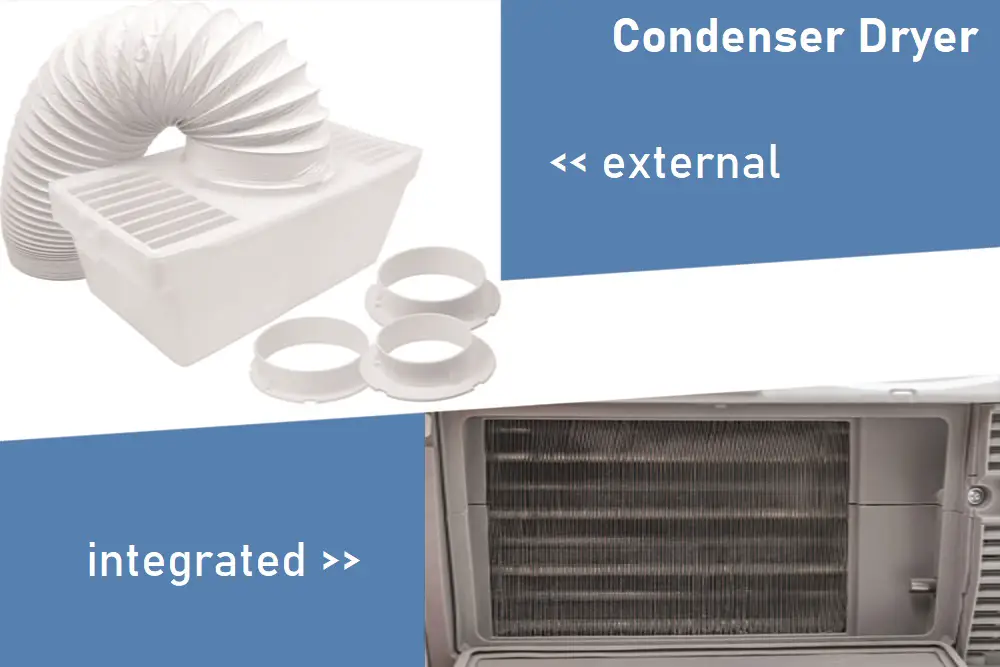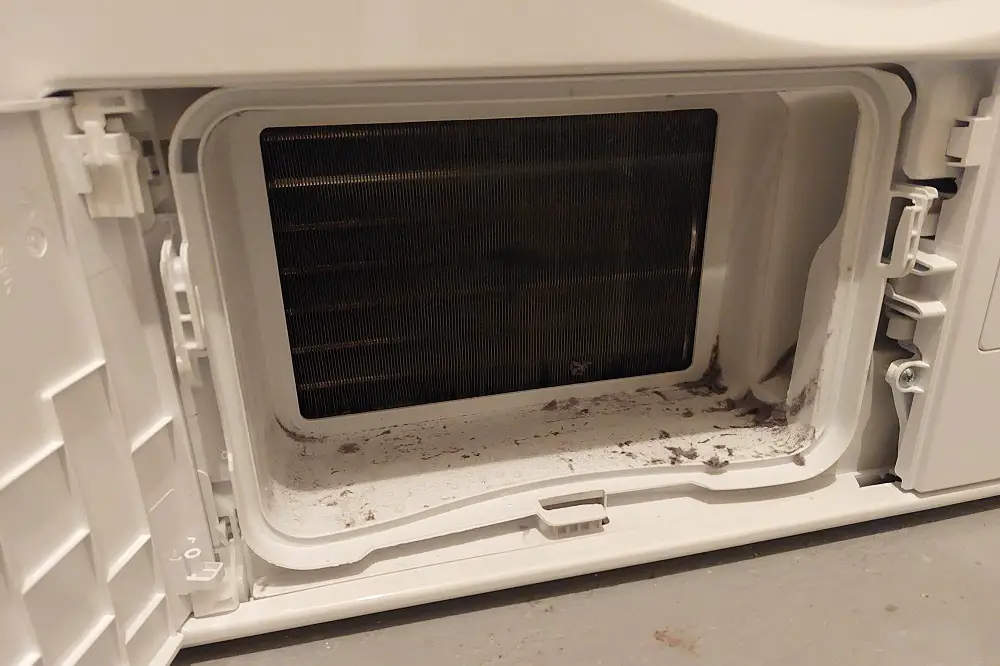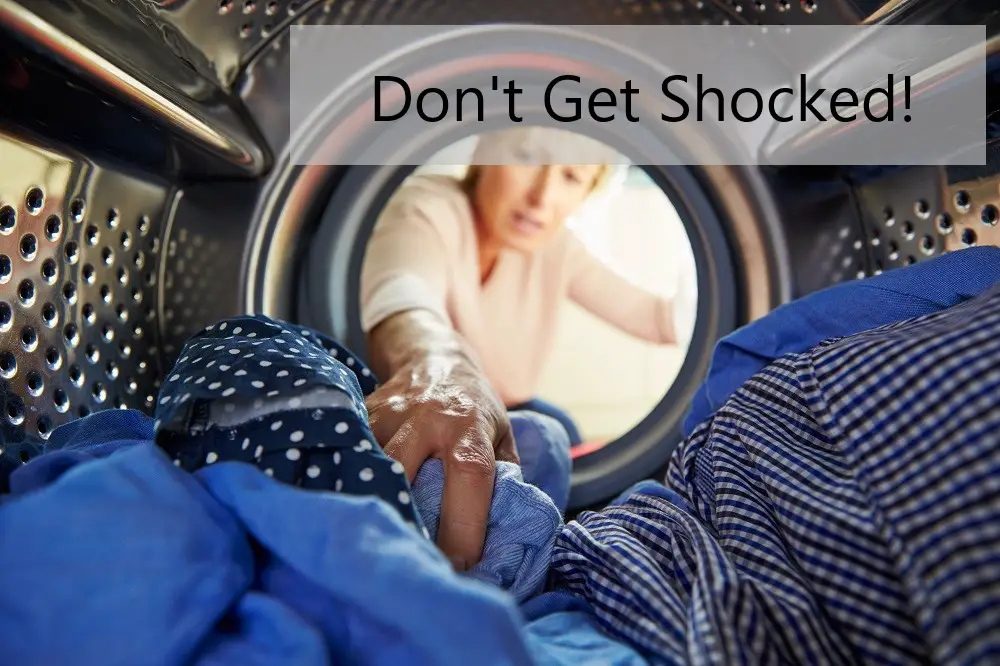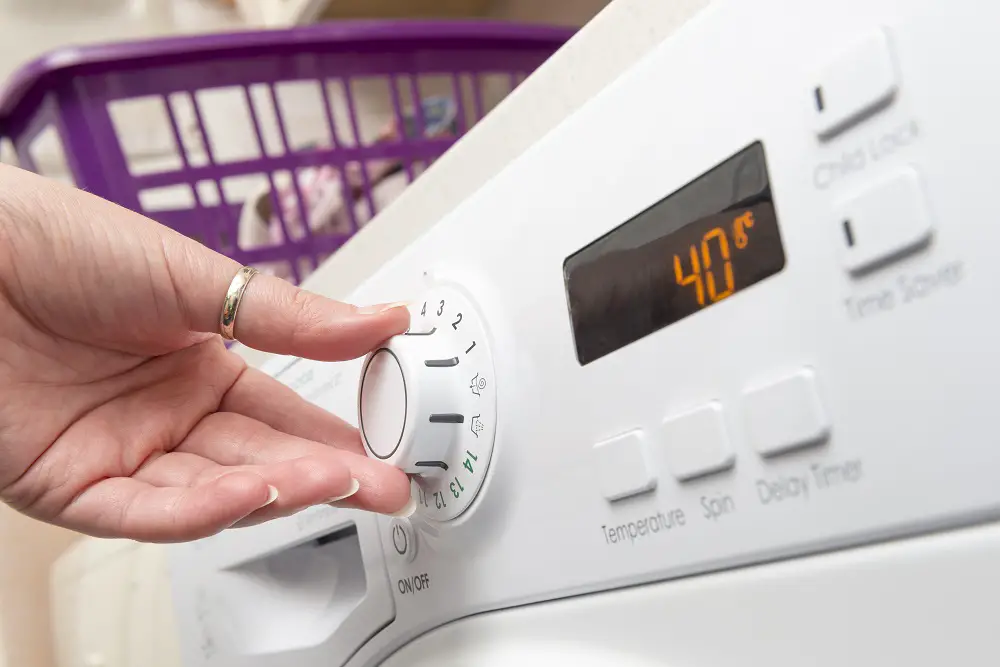If you’re looking for a clothes dryer, but don’t have the space for a dedicated laundry room or venting provisions, consider purchasing an energy-efficient heat pump dryer.
While a heat pump dryer has some benefits over a conventional dryer, some problems with a heat pump unit include smaller capacity, more expensive to purchase and repair, can’t be wall-mounted, and requires more maintenance.
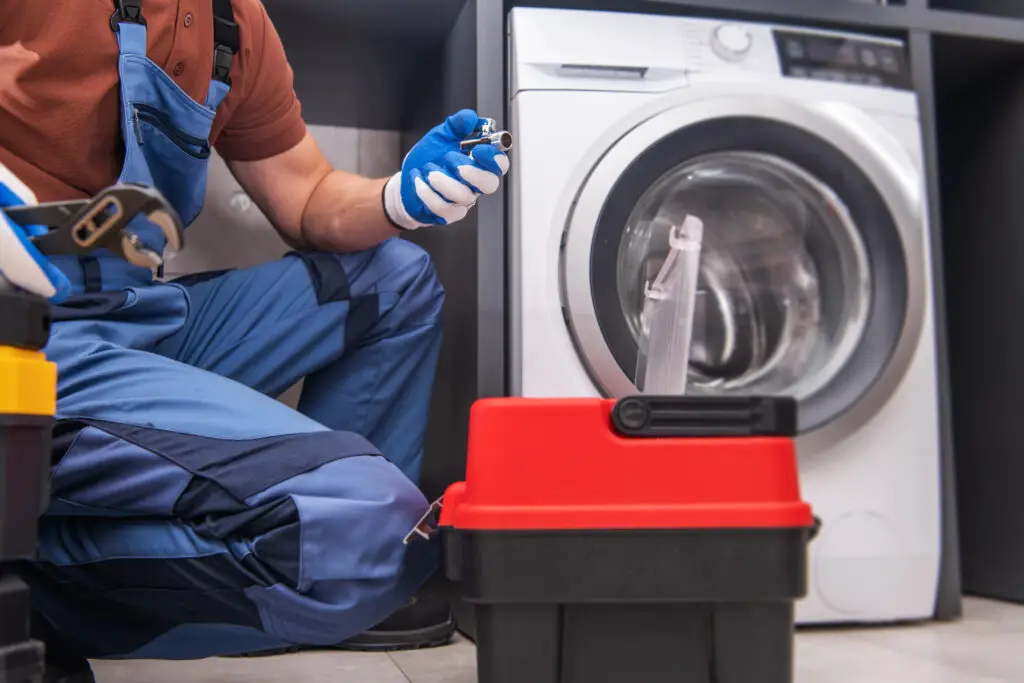
Read on to learn more about the problems with heat pump clothes dryers to make a well-informed choice before buying one.
Table of Contents
8 Problems With Heat Pump Dryers
Here are some of the common problems with heat pump dryers.
1. More Expensive Than Conventional Dryers
Although a heat pump dryer might last longer and is energy-efficient, it costs more to purchase one than a conventional dryer or even a condenser dryer.
| Tumble Dryer | Average Price |
|---|---|
| Vented Dryer | 300 USD |
| Condenser Dryer | 450 USD |
| Heat Pump Dryer | 750 USD |
This is mainly because the technology used in these dryers is more complex and still somehow new.
2. Smaller Capacity
Currently, most heat pump dryers are more compact and have a capacity of 4 cubic feet (which is less than half of a conventional dryer’s seven cubic feet capacity).
This might not be the best option if you’ve got more members in your household.
| Heat Pump Dryer Sizes | Distribution |
|---|---|
| < 4.0 cu. ft | 8 % |
| 4.0 cu. ft. | 60 % |
| 7.4 cu. ft. | 30 % |
| 9 cu. ft. | 1 % |
However, slightly higher capacity models are slowly appearing in the market these days.
3. Takes Longer To Dry Clothes
Heat pump dryers take longer to dry clothes since they use low temperatures. On average, a full load of laundry takes 241 minutes to dry in a heat pump dryer, compared to 167 minutes in a vented dryer.
While the total drying time varies with the choice of the drying cycle, it takes about 2 hours and 45 minutes to dry a full load of clothes.
If you are concerned about the extensive drying times, you have to read our article with great comparisons of the cycle lengths.
4. Costly Repairs
Although heat pump dryers are easy to maintain and unlikely to break down, they will be expensive to repair if they do.
It’s mainly because, unlike other appliances, these are still relatively uncommon; it might be difficult even to find a knowledgeable technician away from the main city areas.
5. Can’t Be Wall-Mounted
These dryers are far too heavy to hang on the wall.
While not many people mount their dryers, it may be a concern if you want to do so for the lack of floor space.
Wall-mounting heat pump dryers will strip the paint and break the drywall. They’re too heavy to stay suspended safely, even with brackets.
6. Require More Maintenance
To ensure your dryer functions properly, you’ll need to regularly clean the lint filter and the condenser coils (often weekly or once every few months).
This includes removing the lint from the trap after each drying cycle and professional deep cleaning every few years to remove lint deep inside the machine.
Read our service guide about how to do the maintenance.
7. Water Tank Requires Regular Draining
Unless your heat pump dryer is close enough to a drain (in which case you can plumb it to drain the condensation directly into the drain), the other option is to use a water tank (similar to condenser dryers).
When using a water tank to drain a heat pump dryer’s condensation, you must empty it after every 1-2 uses.
While it doesn’t need emptying too often if you forget to do so, the water might develop a foul smell, and there are increased chances of mold growth.
8. Possibility of Condensation in Humid Areas
Although these appliances are designed to contain as much water as possible and reduce the possibility of mold and condensation, they aren’t very suitable for places with increased humidity.
If you reside in a humid area like a coastal place or during summertime, you might notice water droplets collecting outside the unit near the condensing coils. If not cleaned properly, there could be mold buildup within the appliance.
We have 8 Easy Steps to Stop Condensation From Tumble Dryer in our article.
Why Should You Buy a Heat Pump Dryer?
While there are evident problems with heat pump dryers, there are still plenty of reasons to buy one.
Energy Efficient
Heat pumps are low-energy appliances and make an excellent choice for energy-efficient homes. The energy-efficient feature helps reduce your utility bills.
As per Energy Star, these dryers save 40-50% of electricity compared to conventional or condenser dryers. Also, they don’t pull unconditioned air (the polluted outdoor air) into your home with negative pressure like regular dryers do throughout the cycle.
Usually, Tumble Dryers Do Use a Lot of Energy – but heat pump dryers do best.
Gentler on Clothes
Heat pump dryers heat the air they draw in only to about 50-55 degrees Celsius. Since they maintain lower temperatures with a refrigerant, the heat pump is gentler on your laundry.
You can even dry delicate fabrics in these dryers since the low temperature won’t cause any scorching, fading, or shrinking of the material or weakening of the fabric (that could lead to tearing).
Last Longer
A heat pump model will last much longer than most compact dryers since the body and motor are built to last. It will still need regular maintenance but can last between 15-20 years.
Interested in how long you will be able to rely on your heat pump dryer? Read our Durability And Maintenance Guide
No Need To Install Dryer Vent
Unlike a standard dryer that needs proper venting for the hot air and moisture, since the heat pump dryer reuses the air (with a closed loop functioning), it doesn’t need an external vent installation.
This means that the ultra-fine particles (that typically escape via the dryer exhaust of conventional dryers) are pulled out of the airstream with the condensed water. They don’t escape into the indoor air or cause allergic or respiratory issues.
You Can Stack These Dryers
If the primary reason for getting a heat pump dryer is that you’re tight on floor space, it’s a perfect choice. While you can’t wall mount this appliance, you can keep your washer and dryer stacked with a stacking kit, occupying less space.
Conclusion
Despite being a better choice over conventional dryers, heat pump dryers have disadvantages like:
- more expensive to purchase or repair,
- takes longer to dry clothes,
- has a smaller capacity,
- can’t be wall mounted,
- requires more maintenance, and
- chances of condensation in humid areas.
Although they have these problems, they’re a good choice overall. These ventless dryers last longer, help save money on electricity bills in the long run, are gentler on your laundry, and are stackable to save space.
On a positive note, the dryer electronics and heat pumps continue to improve each year and look much better than they did about 3-5 years back.
